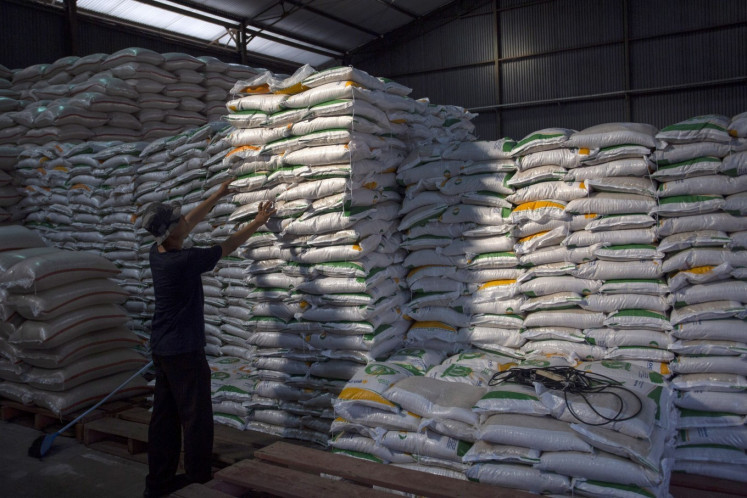Popular Reads
Top Results
Can't find what you're looking for?
View all search resultsPopular Reads
Top Results
Can't find what you're looking for?
View all search resultsTraditional trade to dominate retail over next 15 years: Study
A recent study shows that traditional trade will remain the primary force in the retail landscape and will do so for the next decade and a half
Change text size
Gift Premium Articles
to Anyone
A
recent study shows that traditional trade will remain the primary force in the retail landscape and will do so for the next decade and a half.
The report on Indonesian consumers released by Bain & Company, in collaboration with Kantar Worldpanel, highlighted that traditional trade, encompassing wet markets and warung [small stall], drove 85.2 percent of the US$95 billion grocery retail value attained in 2012.
The results were based on data from Euromonitor, BIS Foodservices, Bain & Company analysis, AC Nielsen, PlanetRetail as well as interviews with fast moving consumer goods (FMCG) companies.
The retail value took into account the sales of chief consumer products such as packaged food and beverages; apparel; consumer electronics; and personal accessories.
Modern retail collected the remaining 14.8 percent, with convenience stores and mini markets contributing approximately $5.6 billion and super- and hypermarkets pulling in $5.3 billion and $3.3 billion respectively.
Nader Stefano Elkhweet, a partner of PT Bain Indonesia, said that modern trade would need another 15 to 20 years to balance, let alone usurp, the dominance of traditional trade.
'In 2017, traditional markets are still estimated to contribute 82.3 percent to the $147 billion retail
value,' he said.
However, although it would take more than a decade, Indonesia's modern trade would catch up to traditional trade in a much shorter period than the time it took in the United States and Europe.
Elkhweet pointed out that it took Italy approximately 30 years for traditional and modern trade to be on par with each other in terms of contributions to overall retail value.
'Modern trade is growing at double the speed of traditional trade,' he said, adding that convenience stores and mini markets were the fastest growing modern trade format.
He added that the compound annual growth (CAGR) for traditional trade would be at 8 percent between 2007 and 2017. Meanwhile, the CAGR for modern trade would be, on average, 16 percent.
'When broken down, the CAGR for convenience stores and mini markets is 23 percent, while the number for super- and hypermarkets is 12 percent and 13 percent respectively,' he told The Jakarta Post.
Elkhweet added that regulations as well as constraints on the availability of retail real estate had kept the speedy proliferation of modern trade under control.
The Jakarta administration, for example, requires mini market to be located within designated commercial areas and stand a minimum of 500 meters away from traditional markets.
'Traditional trade is still very important today because a lot of Indonesia is rural or semi-rural,' he said.
Moreover, Indonesian consumers exhibited a small purchase size, such as shampoo sachets, behavior as it enabled them to buy premium goods at affordable prices.
The Kantar Worldpanel survey shows that the average purchase size for liquid milk in Indonesia was roughly 250 milliliters, whereas in China, the average is nearly 3 liters.
'But Indonesian consumers will, in time, move to larger pack sizes as their incomes grow,' he said, referring to the 80 million 'new consumers' ' those with annual disposable household incomes of above $5,000 ' the country would have by 2030.










